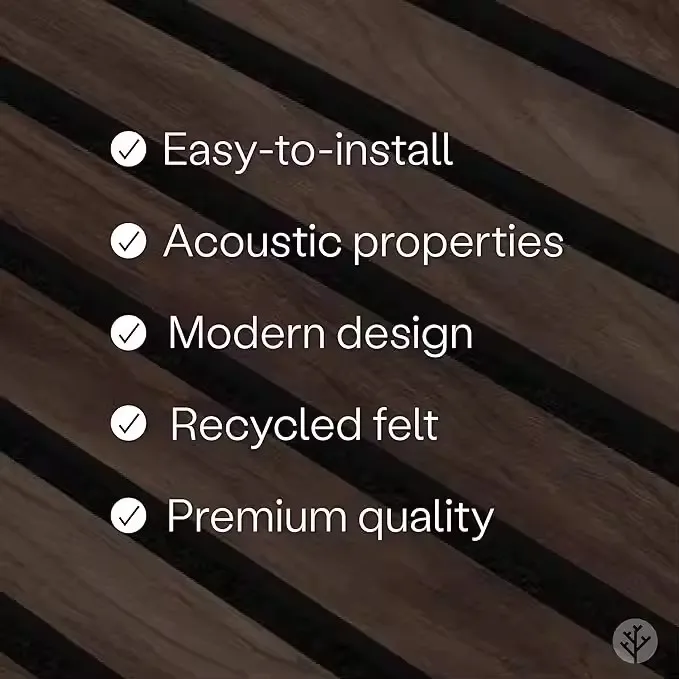How to Make Sound Absorbing Wall Panels
Sound absorbing wall panels are an effective way to reduce noise levels in various environments, from home theaters and recording studios to open offices and busy restaurants. Whether you're aiming to improve acoustics or simply minimize unwanted noise, creating your own sound absorbing panels can be a cost-effective solution. Here’s a step-by-step guide on how to make sound absorbing wall panels.
Materials Needed
To create effective sound absorbing wall panels, you will require the following materials
1. Fiberglass or Mineral Wool Insulation These are excellent sound absorbers. Choose panels with a thickness of at least 2 inches for the best results. 2. Fabric A fabric that is not too thick will allow sound to penetrate. Typical choices include burlap, cotton, or other acoustically transparent materials. 3. plywood or MDF Boards These will serve as the backing for your panels. 4. Staple Gun This will be used to secure the fabric to the insulation and backing. 5. Measuring Tape Precision is key when measuring and cutting. 6. Utility Knife or Scissors For cutting the insulation and fabric. 7. Adhesive Spray or Glue To adhere the insulation to the backing.
Step-by-Step Process
1. Determine Dimensions Measure the area where you plan to install the panels. Common panel sizes are 2x4 feet, but you can customize them to fit your space. Determine how many panels you need based on your sound absorption goals.
2. Cut the Insulation Using a utility knife, cut the fiberglass or mineral wool insulation to your desired dimensions. Be sure to wear a mask and gloves, as these materials can irritate the skin and lungs.
3. Prepare the Backing Cut the plywood or MDF boards to match the size of your insulation panels. These boards will provide structure and support to your sound absorbing panels.
how to make sound absorbing wall panels

4. Attach the Insulation Use adhesive spray or glue to attach the cut insulation to the backing. Be sure to spread the adhesive evenly and allow it to set as per manufacturer's instructions.
5. Wrap with Fabric Lay your fabric flat and place the backing with the insulation facedown on top of it. Make sure you have enough fabric on the sides to wrap around the edges. Pull the fabric tightly and secure it to the back of the panel using a staple gun. Start from the center and work outwards to avoid wrinkles.
6. Trim Excess Fabric Once you have stapled the fabric securely, trim any excess material from the edges to ensure a clean look.
7. Install the Panels Measure and mark where the panels will hang on the wall. For easier installation, you can attach D-ring hangers or picture hooks on the back of each panel. If you prefer more permanence, consider using construction adhesive or wall anchors to secure the panels directly onto the wall.
Additional Tips
- Aesthetic Considerations Choose fabric colors and patterns that match your room’s décor. Neutral colors usually work well, but vibrant patterns can add a unique touch. - Combine Techniques For enhanced sound absorption, consider combining panels of different sizes or thicknesses. You can also position them strategically to minimize sound reflections. - Maintenance Keep panels clean by vacuuming them periodically or spot cleaning without harsh chemicals.
Conclusion
Making your own sound absorbing wall panels can be a rewarding project that significantly enhances the acoustics of any space. Not only do these panels help in controlling noise, but they can also add an aesthetic touch to your room. With the right materials and a bit of effort, you can improve the sound quality of your environment while expressing your personal style. So gather your supplies, follow these steps, and enjoy the benefits of a quieter, more acoustically pleasing space!
-
Snuffle Ball Benefits for Indoor DogsNewsAug.22,2025
-
Building Acoustic Panels for Classroom NoiseNewsAug.22,2025
-
Installation Best Practices for Acoustic Art PanelsNewsAug.22,2025
-
Health Benefits from Noise-Reducing Hex Acoustic PanelsNewsAug.22,2025
-
Creative Shapes Using Felt Panels Acoustic DesignsNewsAug.22,2025
-
Polyester Acoustic Panels in Modern Office PodsNewsAug.22,2025
